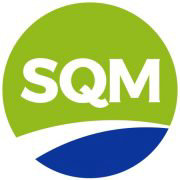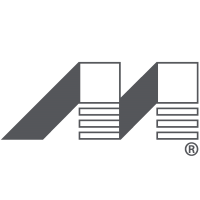
First American Financial Corp
NYSE:FAF


| US |

|
Salesforce Inc
NYSE:CRM
|
Technology
|
| CL |

|
Sociedad Quimica y Minera de Chile SA
NYSE:SQM
|
Chemicals
|
| US |

|
UnitedHealth Group Inc
NYSE:UNH
|
Health Care
|
| US |

|
Centene Corp
NYSE:CNC
|
Health Care
|
| US |

|
Charles River Laboratories International Inc
NYSE:CRL
|
Life Sciences Tools & Services
|
| US |

|
Autozone Inc
NYSE:AZO
|
Retail
|
| US |

|
ServiceNow Inc
NYSE:NOW
|
Technology
|
| US |

|
Valero Energy Corp
NYSE:VLO
|
Energy
|
| US |

|
Palantir Technologies Inc
NYSE:PLTR
|
Technology
|
| US |

|
Mosaic Co
NYSE:MOS
|
Chemicals
|
| US |

|
Roblox Corp
NYSE:RBLX
|
Media
|
| US |

|
Quanta Services Inc
NYSE:PWR
|
Construction
|
| US |

|
Albemarle Corp
NYSE:ALB
|
Chemicals
|
| US |

|
Crocs Inc
NASDAQ:CROX
|
Textiles, Apparel & Luxury Goods
|
| US |

|
Fortinet Inc
NASDAQ:FTNT
|
Technology
|
| US |

|
Starbucks Corp
NASDAQ:SBUX
|
Hotels, Restaurants & Leisure
|
Utilize notes to systematically review your investment decisions. By reflecting on past outcomes, you can discern effective strategies and identify those that underperformed. This continuous feedback loop enables you to adapt and refine your approach, optimizing for future success.
Each note serves as a learning point, offering insights into your decision-making processes. Over time, you'll accumulate a personalized database of knowledge, enhancing your ability to make informed decisions quickly and effectively.
With a comprehensive record of your investment history at your fingertips, you can compare current opportunities against past experiences. This not only bolsters your confidence but also ensures that each decision is grounded in a well-documented rationale.
Do you really want to delete this note?
This action cannot be undone.

| 52 Week Range |
52.48
67.64
|
| Price Target |
|
We'll email you a reminder when the closing price reaches USD.
Choose the stock you wish to monitor with a price alert.

|
Salesforce Inc
NYSE:CRM
|
US |

|
Sociedad Quimica y Minera de Chile SA
NYSE:SQM
|
CL |

|
UnitedHealth Group Inc
NYSE:UNH
|
US |

|
Centene Corp
NYSE:CNC
|
US |

|
Charles River Laboratories International Inc
NYSE:CRL
|
US |

|
Autozone Inc
NYSE:AZO
|
US |

|
ServiceNow Inc
NYSE:NOW
|
US |

|
Valero Energy Corp
NYSE:VLO
|
US |

|
Palantir Technologies Inc
NYSE:PLTR
|
US |

|
Mosaic Co
NYSE:MOS
|
US |

|
Roblox Corp
NYSE:RBLX
|
US |

|
Quanta Services Inc
NYSE:PWR
|
US |

|
Albemarle Corp
NYSE:ALB
|
US |

|
Crocs Inc
NASDAQ:CROX
|
US |

|
Fortinet Inc
NASDAQ:FTNT
|
US |

|
Starbucks Corp
NASDAQ:SBUX
|
US |
This alert will be permanently deleted.
 First American Financial Corp
First American Financial Corp






 You don't have any saved screeners yet
You don't have any saved screeners yet

Greetings and welcome to the First American Corporation Q4 and Full Year 2018 Quarter Earnings Call. At this time, all participants are in a listen-only mode. A question-and-answer session will follow the formal presentation [Operator Instructions]. As a reminder, this conference is being recorded.
It is now my pleasure to introduce your host, Craig Barberio, Vice President, Investor Relations. Thank you. You may begin.
Good morning, everyone, and welcome to our 2018 Fourth Quarter and Year-End Earnings Conference Call. Joining us today will be our Chief Executive Officer, Dennis Gilmore and Mark Seaton, Executive Vice President and Chief Financial Officer.
Some of the statements made today may contain forward-looking statements that do not relate strictly to historical or current fact. These forward-looking statements speak only as of the date they are made, and the company does not undertake to update forward-looking statements to reflect circumstances or events that occur after the date the forward-looking statements are made. Risks and uncertainties exist that may cause results to differ materially from those set forth in these forward-looking statements. For more information on these risks and uncertainties, please refer to today's earnings release, and the risk factors discussed in our Form 10-K and subsequent SEC filings.
Our presentation today contains certain non-GAAP financial measures that we believe provide additional insight into the operational efficiency and performance of the Company relative to earlier periods and relative to the Company's competitors. For more details on these non-GAAP financial measures, including presentation with and reconciliation to the most directly comparable GAAP financial measures, please refer to today's earnings release, which is available on our website, www.firstam.com.
I will now turn the call over to Dennis Gilmore.
Good morning, and thank you for joining our call. Today, I will begin with a review of our fourth quarter and full year results, and then discuss our outlook for 2019. Fourth quarter earnings per share were $0.81 or $1.27 excluding net realized losses, primarily related to a decline in the fair value of our equity securities. Our earnings this quarter were largely driven by a combination of strength in our commercial business, while the revenue was up 18% as well as rising investment income from our cash and investment portfolio. Growth in our commercial business was broad-based across most markets, asset types, and transaction size. In addition, growth in our commercial escrow balances had a positive effect on our investment income in the quarter.
Revenue from our residential purchase business fell 5%, and we saw a decline in open purchase orders of 4%. This trend continued in January as open purchase orders declined 4%. So far in February, orders are down 6% as recent severe weather across the country has had a negative impact on volumes. Refinance revenue dropped 33% in the fourth quarter as the market continued to adjust to increasing mortgage rates. Refinance revenue accounts for 8% of our direct revenue in the fourth quarter, down from 13% [ph] a year ago.
Overall, our title segment posted a pre-tax margin of 10.4% this quarter or 14.2% excluding net realized investment losses. Our home warranty business continues to deliver strong returns for our Specialty Insurance segment. However, our property and casualty business was once again impacted by California wildfires. This quarter our property and casualty business had one wildfire event in Northern California that exceeded our $5 million reinsurance retention limit, compared with two such events last year. As a result, the segment's overall loss ratio declined modestly to 62%, with a pre-tax margin of 0.7% or 8.5% excluding net realized investment losses.
Turning to full year 2018. The Company delivered earnings per share of $4.19, or 11% increase over last year. Our pre-tax title margin was 12.4% or 13.2% excluding net realized investment losses, the highest in our Company's history. With regards to capital management, we remained active in 2018, completing acquisitions valued at $83 million. The addition of FirstFunding, PCN/Safe Escrow, and a complementary lien release business enabled us to offer our customers new ways to reduce risk and increase efficiency. We raised our dividend by 11% and repurchased $21 million of our stock at an average price of $44.20. We continue to allocate our capital to opportunities with the highest risk adjusted return.
Turning to our outlook. Given the decline in residential orders, we've aggressively adjusted our cost structure to position ourselves for 2019. Net of acquisitions, we've reduced our domestic title headcount by 4.5% in the fourth quarter compared to last year. We believe we are staffed appropriately given the current order trend, but we will continue to monitor market conditions closely and adjust as needed. We anticipate that the ongoing decline in the purchase market will be a headwind in 2019, but will be partially offset by rising investment income. We also expect our commercial business will deliver another strong year.
In 2019, we expect to achieve our long-term financial objective, a pre-tax title margins of 11% to 13%, and a return on equity of 12% to 14%. As part of our growth strategy during 2019, we will continue to focus on developing innovative solutions that improve the customer experience and increase our efficiency. These include the expansion of our digital closing services, further automation of our title production process, and utilization of artificial intelligence to expand and leverage our extensive data assets.
In November, we launched the first supply chain platform in our industry. We anticipate that over time this platform will increase efficiency, reduce risk and improve the title production process.
We also achieved a key milestone in 2018, when our bank, First American Trust, took its first deposits from our title agents. Providing banking services to our agents, increases their efficiency and reduces risk. In addition, we benefit from increased investment income. We will continue to focus on these innovative efforts and others throughout 2019. I'm proud of our Company's financial and strategic achievements that we produced a record year in 2018.
Lastly, I'm pleased to announce this morning we've been named to Fortune 100 best places to work for the fourth year in a row. Our Company's vision remains consistent, to be the premier title insurance and settlement service company for our employees, our customers, and our shareholders.
I'd now like to turn the call over to Mark for more detailed review of our financial results.
Thank you, Dennis. I'll begin by commenting on an accounting change that took effect in the first quarter of 2018, and had a significant impact on our fourth quarter results. Our earnings per share was $0.81 this quarter, which includes net realized losses of $0.47. Prior to 2018, unrealized changes in the fair value of both equity and debt securities were recorded on the balance sheet and excluded from net income. Generally, changes in fair value were only recorded in the income statement when an equity or debt security was sold.
Beginning in the first quarter of 2018, GAAP required the changes in the fair value of equity securities will be recorded in the income statement, regardless of whether they were sold. This new standard does not apply to fixed income securities. This accounting change will create more volatility in our earnings moving forward. We believe changes in the value of our investment portfolio are important for investors over the long-term. However, in a given quarter or year, they make it more difficult to assess our operating performance.
Beginning this quarter, to provide additional disclosure to investors, we have included a table on page 10 of our earnings release, which provides detail on certain key metrics on a GAAP basis, along with a reconciliation of these metrics, excluding the impact of net realized gains or losses. We believe these metrics are a more appropriate measure for investors to evaluate our operating performance.
In the Title Insurance and Services segment, direct premium and escrow fees were up 1% compared with last year. This increase reflects a 17% increase in the average revenue per order, largely offset by a 14% decline in the number of direct title orders closed. The average revenue per order increased to $2,824, primarily due to the shift in the order mix to higher premium purchase and commercial transactions. The average revenue per order for commercial transactions increased 17%, while the average revenue per order for purchase transactions increased 2%.
Agent premiums, which are recorded on approximately a one quarter lag relative to direct premiums were down 3%. The agent split was 78.6% of agent premiums. Information and other revenues totaled $183 million, down 3% compared with last year. Higher revenues from recent acquisitions were offset by lower revenues from the Company's centralized lender business. Investment income within the Title Insurance and Services segment was $69 million, up 81%. The increase resulted from higher average balances due primarily to strengthen our commercial business and rising short-term interest rates that drove higher interest income in the Company's investment portfolio and cash balances. Higher short-term rates benefit our escrow deposits, operating cash, tax deferred property exchange business and our bank, where we held $4.1 billion in cash and debt securities as of December 31st.
Personnel costs were $426 million, up 3% from the prior year. This increase was primarily driven by severance expense and the impact of recent acquisitions. Other operating expenses were $199 million, down 4% from last year. The decline was due to an increase in earnings credits, a reduction in discretionary spending, and lower production and related costs due to the decline in order volume that was partially offset by a write-off of uncollectible balances and the impact of recent acquisitions.
The provision for title policy, losses and other claims was $45 million or 4% of title premiums and escrow fees, unchanged relative to the prior year. The current quarter rate reflects an ultimate loss rate of 4% for the current policy year with no change in loss reserve estimates for prior policy years.
Pretax income for the Title Insurance and Services segment was $136 million in the fourth quarter compared to $166 million in the prior year. Pretax margin was 10.4% compared with 12.2% last year. Excluding the impact of net realized investment losses, pre-tax margin was 14.2% this quarter compared to 12.4% last year. Net expenses in the corporate segment were $18 million, up 5% compared with last year due to lower investment income related to our deferred compensation plan.
The effective tax rate for the quarter was 21.6%, lower than our normalized tax rate of 24%, due primarily to true-ups of the 2017 estimate we had initially recorded for tax reform. Those benefits totaled $6.8 million for the quarter. Cash provided by operations was $308 million, up 75% compared with last year. From October through the first week of January, we repurchased $21 million of shares at an average price of $44.20. Of this amount, $19 million occurred in the fourth quarter. Although we have not repurchased shares in February, we will continue to be opportunistic on buybacks moving forward. Notes and contracts payable on our balance sheet totaled $732 million as of December 31st, which consists of $547 million of senior notes, $160 million on our credit facility, $19 million of trustee notes and $6 million of other notes and obligations.
I would now like to turn the call back over to the operator to take your questions.
Thank you. At this time we will be conducting a question-and-answer session [Operator Instructions]. Our first question is coming from Mark DeVries of Barclays. Please go ahead.
I was hoping to get some additional color on outlook for title insurance in 2019, in particular, I think you guys remain kind of cautious on the purchase market. What do you think really was driving the kind of inflection that the deceleration in the last couple of months? And why you're not optimistic that that kind of reverse this course?
Well, if we look at the fourth quarter, our orders were down -- open orders on purchases were down 4%, been pretty consistent that for a few quarters and consistent going into January. I think I've said it before, I believe that the market is just really in the process of resetting. We got home price appreciation slowing, we got the supply going up, days on market going up, so to me, just it leads us to believe that the markets are in the process of resetting. So when we look forward into the rest of '19, we believe the market -- purchase market will be under pressure. We expect it to be down slightly, and that's why we set the business up the way we did in the fourth quarter. We aggressively trimmed our expenses. So again, our view right now is, the purchase market will be down in '19, if we're wrong on that call, it'll lead to a benefit, and a couple of that with -- we do believe the commercial market will be another strong year.
And then just a follow-up on that last comment, Dennis. I think, historically you've been actually little more guarded around the outlook for the commercial, because we've-it feels like almost every single year we're setting a new record, and I think you justifiably assume that this can continue, but here we are after another record year saying this continues. What are you seeing that gives you comfort that that continues to be an area of strength?
We had a great fourth quarter. We have a very strong franchise in commercial, obviously unbiased. I think we have the best people and the best operation, but we have a strong, strong fourth quarter. We are up 18% in the quarter though. We also had a number of large deals versus a year ago, so large deals are always lumpy to us in any one quarter. But with that said, we were strong in the property types, asset types, all deal sizes. We've got a good pipeline going into '19. So again we're optimistic going into '19, but I'll probably be consistent here. If I were to forecast and we have, we believe we will be down slightly off of '18's record.
Thank you. Our next question is coming from Jason Deleeuw of Piper Jaffray. Please go ahead.
I just wanted to follow up on the commercial. If you could give us any color in terms of regions of strength that you see. And then, when you are looking at the pipeline for 2019, can you talk about the opportunities or what you're seeing in that pipeline for the large deals versus kind of the regular smaller-sized deals?
We were strong against really across the Board here on size, type and location, a lot of the large deals that were in the New York area, so that was a strength for us in the fourth quarter. We have a good pipeline of large deals going into '19. So again, but just to be -- make sure we're clear. Large deals are always lumpy, so -- and we benefited from large deals in the fourth quarter, but again, we've got a strong pipeline going into '19.
And then on the investment income, we had another Fed rate hike in December. And can you help us think about any size increase in the investment income, kind of, from what we saw in the fourth quarter?
So, when the Fed raised in December, we got a 25 basis point increase in the average rate that we're getting on our balances, so we got that. So I think everything else being equal, we would expect, as we've talked about in the past, a $15 million annualized benefit based on that. One thing that we do look at though is what happens with balances. Typically our balances are higher in the fourth quarter, especially on commercial, because there is a lot of commercial transactions that they were holding balances for, and balances are little bit less in the first quarter. So we think investment income is definitely going to rise next year, it will probably rise from Q1 to Q4 too, but just probably not the same growth rate as we saw from Q4 and Q3.
Thank you. Our next question is coming from Mark Hughes of SunTrust Robinson Humphrey. Please go ahead.
The revenue per order on purchase side -- on the purchase side went from kind of upper single digits down to -- up 2%. Was that part of this resetting process or was there mix shift in there perhaps?
There's a couple of things happening there. The first thing is, it has the rate of ARPU growth in purchase has been coming down. A lot of that was because we were raising rates two years ago, and now a lot of that has kind of washed out, that has been reducing our average revenue per order. The other thing is at least in the fourth quarter, we saw a little bit of a mix shift. Obviously, we get a lot of -- the ARPU in California is higher than other states, and we saw a little bit of a mix shift, but the biggest driver is the fact that we're starting to lap our -- the rate increases that we did over a year ago.
And then on the capital management front, you repurchased some shares in the fourth quarter, can you give us some sense of your -- what you saw in the market, obviously the stock was down and more attractive, but whether the dynamic that informed your decision to be active again? Does that continue here in February? That's the question.
So, we're pretty selective at the time that we choose to enter the buyback market. What we saw in October was, our stock was down quite significantly, some of that was because of the news that came on the heels of our earnings call, some of that was because we had disclosed our purchase order counts that were down, and our stock was down quite significantly, because of that, we just felt like the dislocation of market was too good to pass out. So we were buying shares in October through the first week of January, and we feel really good about that. As I mentioned on the call, we're not buying in February, but it's something that we're always looking at and we feel like it's a good thing for our investors and we'll do it.
Thank you. Our next question is coming from John Campbell of Stephens Inc. Please go ahead.
Just on the FNF and Stewart, they obviously hit a [indiscernible] in New York. If they're selling or divesting some of the Stewart assets in the state, is that something you guys would look to take advantage of?
We put out the deal, potentially if there are the right assets for us, we potentially take a look at it, for sure. But with regards to the overall deal, just so you understand how we're looking at it, we're more focused on our own plans, not on that deal. We are really focused on innovation in the company to drive greater efficiencies and things of that nature. So, we're very focused on what we've got going on, and we are very optimistic looking forward.
And then one more related to Stewart, I guess. You guys put up very good commercial growth, FNF did the same thing, Stewart's was down, I think it was down 8% year-over-year. Are you -- do you feel like you're taking share out there? Is it just kind of the lumpier deals go to you guys?
I can't comment if we directly took share from Stewart or not, but like I mentioned earlier, we have a very strong commercial franchise, and I think we grew very well in that market.
And then last one from me. Mark, in the title segment on the increase in earnings credit, first, can you kind of size that up for us? And then, what exactly is that? Is that a one-time event?
So let me just get that number fully. So with earnings credits, this quarter in the title segment we had about $9 million of credits. When you look at a year ago, it was about $3 million, and it's really just a function of balances, as I talked about. Every time the Fed raises rates, where -- we get higher interest rate, some of that benefit comes through our investment income line item, which is revenue, and some of it in certain states comes as an offset to expenses, which hits like as an offset for other operating expenses. So we not only see a growth in investment income, but we also see a growth in earnings credits which we saw this quarter. So it went up from about $3 million to $9 million this quarter.
So that's not technically one-time. As rates rise, you get the benefit on both investment income on the revenue line and then offset the credits or using credit.
Correct.
[Operator Instructions] Our next question is coming from Chris Gamaitoni of Compass Point. Please go ahead.
Thanks for taking my call. First on the buybacks, what's the remaining authorization following the January purchases?
We have $162 million available for repurchase, as of the end of January.
Can you quantify, obviously you kind of reached levels at the business in the residential side for a lower purchase outlook, what was the severance impact in the first -- in the fourth quarter?
It was $9 million in the fourth quarter, typically we have a $1 million or $2 million each quarter, so there's always some level, but this quarter was higher, we've done $9 million.
Relative to the weakness you're seeing in the purchase market, is there -- are there any specific geographies that are noticeably weaker or noticeably stronger than others, speaking about kind of your business mix in your direct business.
When we talk about our direct orders, again, we have a bias toward western -- the western part of the country, but we definitely seeing weakness in the western states. I would probably be the driver right now. But overall -- again, overall the market -- our take right now is slowing, and probably will continue to be in the range we're seeing right now.
And are we at a point where your increased usage of AI for data collection, other opportunities can start to bent the cost curve a little bit? Do you any sense of a relative impact or is it too still too early?
It's definitely early, but we're moving aggressively utilizing the AI in our data business to expand our databases and make it more dynamic for us to rendering more efficient titled decision. So I think we're going to start to see those impacts in '19 and '20, and we're going to continue to be very, very focused on the innovative efforts across the enterprise right now.
And one last one. What percentage of the information other is centralized business at this point? Obviously refinance is sort of down a lot last year, while we're still below just the comp year-over-year is a lot easier to share.
We can get that for you offline, Chris. I would say it's a majority of it. It's not the majority. If you're just talking about our centralized lender business, I don't have that in hand, but it's less than half of it, but we can get that for you.
Thank you. Our next question is coming from Bose George of KBW. Please go ahead.
So first, just on the investment income. So what's the breakout there between commercial versus residential in terms of the escrow?
Bose, are you talking about investment income?
Yes, for investment income, right.
Well, it's difficult to break out, because when we look at investment income we don't really track it by business, it's more by fixed income, an escrow deposits and earnings we get from the bank. But one of the things that we do track is just balances and what percentage of our escrow balances come from commercial, it's about 70% of our escrow balances on commercial. Now there is more investment income than we get just from or escrow balances right, that's our general account portfolio, but about 70% of our escrow balances are commercial.
And then actually, just going back to the tax rate, so going forward, is 24% of the number we should use for 2019 onwards?
Yes, I think that's still our normalized tax rate. Now, when you look over the last couple of years, well, certainly we've been telling in below what we've disclosed as our normalized tax rate, because we seem to get benefits. We got $6.8 million of benefit this quarter. So I think 24% is a normalized rate. I think in 2019, I would expect that we would get some more discrete benefits that would cause the rate to be lower than that, but on a normalized basis, I mean, 24% is the right number.
But just for modeling, probably used something slightly lower for '19?
I think so, yes. Bose, it could be 22% or 23% for 2019 just because we do expect to get a few more discrete benefits, but on a normalized basis after that 24%.
And then just actually in the corporate segment, it look like there was a loss in investment income and some offset in the personnel. Is there just some noise there?
Yes, that's really our deferred compensation plan. And so what we saw in the fourth quarter was the equity markets really fell off. I think the S&P up and we have 14%. And so when we see that, we'll see a decline in our investment income, and we'll see a completely offsetting decline in our personnel costs, and the same thing will have when the market rebounds as it has in January. So those two move lien lockstep, but our pre-tax earnings should shouldn't be affected by that.
Thank you. Our next question is coming from Geoffrey Dunn of Dowling & Partners. Please go ahead.
I wanted to revisit the commercial market. Understanding that you can have lumpiness in the large deals, it still looks like there's been pretty consistent deal size inflation over the last several years. So I was curious, Dennis, what's your expectation just in terms of deal pricing inflation as you look out on '19 and '20, it doesn't seem like that's being checked at all and the average fee profile could potentially continue to grow?
I think it can, and again a lot of that's going to be driven by the size of the deal, but I think it could grow again in '19.
I mean, I understand fourth quarter is effective, but if you look at any of the last several years, just seems a general trend of strength. So it would seem that unless something is jumping out at you to change that that we probably are continuing to look at growth.
I think that's correct. I think it will continue to grow.
And then, do you have your 1031, as well as your escrow balances at year-end, Mark, was at the $4.1 billion. Was that comparable with the $4.4 billion last quarter?
At year-end, what have in average balances, which is a little bit different than year-end. I think the easiest thing is when we file the K next week we can have our 1031 balances there. On an average basis in Q4, our 1031 was $2.3 billion but that's on average. At the end of the year, it was $2.7 billion for 1031. Our escrow balances at year-end were $3.6 billion.
And then last question, obviously you have benefit of investment income, you have the headwind from purchase volume. Looking at Q1 '19, put that all together, can you outdo Q1 '17 on both an EPS and margin basis?
Q1 '17?
I'm sorry, Q1 '18, just year-over-year, given purchase headwinds, which we really haven't seen for a while.
Let me start there...
I'm curious how the first quarter might shape up for you.
I'll start to answer more on the whole year basis right now. I mean, we think there will be headwinds in the purchase market. We've sized the business accordingly for that headwind. We've also think we'll get strength, continued strength for the year in commercial and in investment income, and a lot of the innovative issues we're attacking right now. So overall, Geoff, we think that there will be revenue pressure but we think we'll still hit our long-term pre-tax margins of 11 to 13 for the company. And if Mark wants to comment on the quarter?
Similar comments in terms of the Q1 '19 versus Q1 '18. I mean, again, we're seeing decline in purchase, decline in refi, offset by an increased investment income. I think we should see a quarter of Q1 '19 very, very similar to Q1 of '18.
Thank you. Our next question is coming from John Campbell of Stephens. Please go ahead.
On the accounting change, that's obviously pretty noisy right now. Mark, I appreciate all the details in the back of the report. I think that's very helpful. But just curious, have you guys considered just reporting on a GAAP EPS number and then also an adjusted number to back all of that out? Are you guys just I guess, continue to call it out just on the headlines like you've done in this report?
Well, I think that’s what we tried to do, John, in the headline of our EPS was, GAAP was $0.81 in the headline of our release, we talked about $1.27. Are you talking about doing something in addition to that?
Yes, just maybe an alternative EPS report out where I mean you have consensus and it will provide an apples-to-apples. I mean, we can do all the work. It's just a little noisy. I mean, there was 60% swing between your GAAP number and what the actual core business there, right?
We can take that into consideration, John. I think unfortunately we're going to have this volatility in our GAAP earnings because of this, and it really didn't affect Q1, Q2, Q3, because there wasn't a big difference in our GAAP and adjusted number, but it was so significant in the fourth quarter. We felt like we had to make these additional disclosures, but we'll take your thought into consideration.
Thank you. Our next question is coming from Mark Hughes of SunTrust Robinson Humphrey. Please go ahead.
Mark, you had mentioned write-offs of uncollectible balances, was that much different than the normal this quarter?
I would say that item was -- so we had basically a $7 million write-off of a receivable, we just didn't feel like we can collect, as I mentioned. In terms of other one-time items this quarter, I mentioned the severance of $9 million, but we also had tax benefits of $6.9 million. So everything kind of washed out for the quarter. But yes, we did have that unusual write-off of the receivable.
Thank you. This brings us to the end of our question-and-answer session. We'd like to thank everyone for their participation today. You may disconnect your lines at this time, and have a wonderful day.